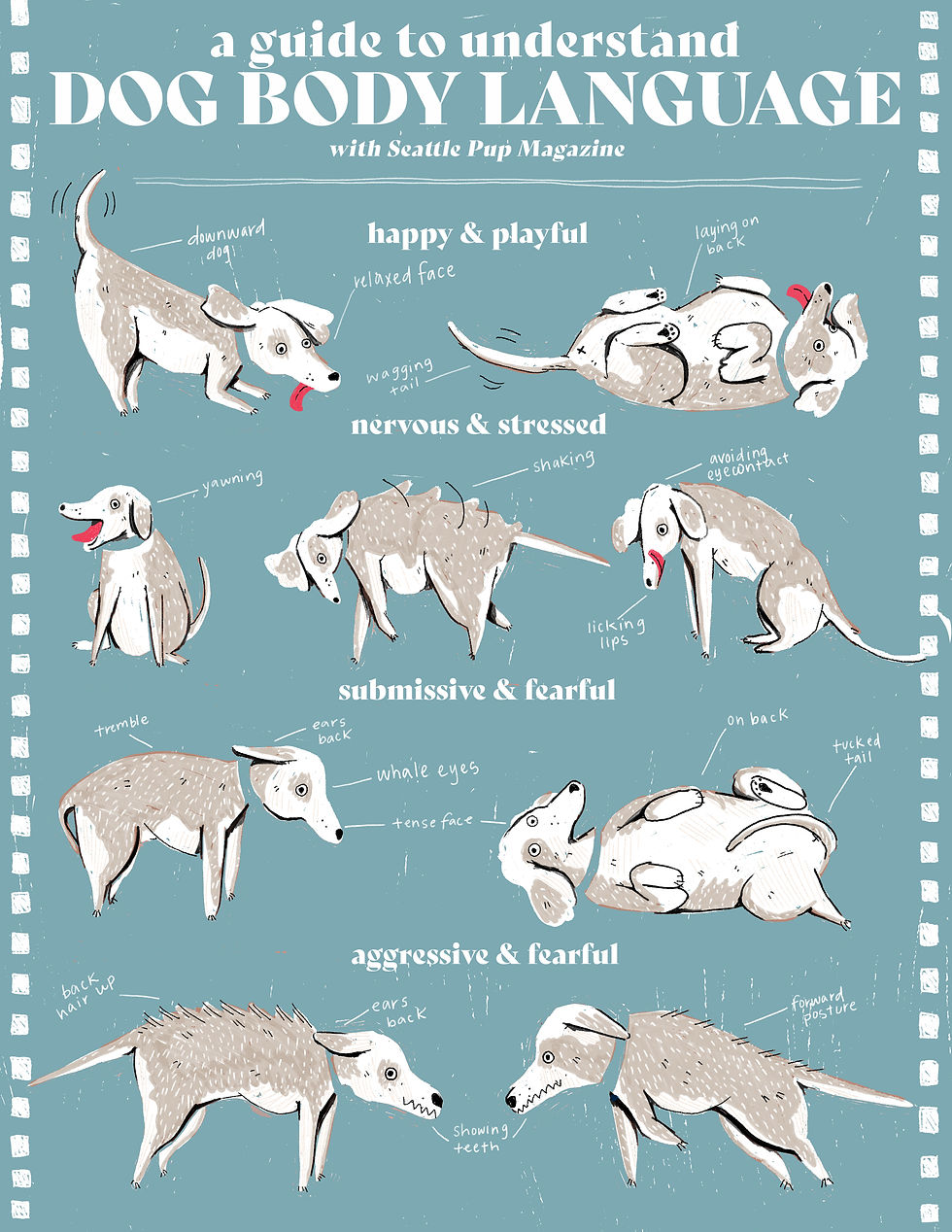The Dog Bod
- Wendi Black
- Oct 6, 2022
- 3 min read
Updated: Nov 3, 2022
Reading body language can be a real art. Fortunately for us, it is usually easier to read a dog than a human! For National Body Language Day this year, Seattle Pup wanted to go over some basic signals an animal may be sending you to help keep you and that animal safe and comfortable.
Dogs tend to be very expressive with their ears and tails. But they aren’t always in line with how a dog is feeling. Usually tail wags and ears neutral implies that a pup is comfortable and content.
But if you see these signs along with raised hackles, it could mean that this furry friend is a little overwhelmed and unsure how to feel, making it a little unpredictable.
Ears back is usually a signal sent to show sadness or fear. This is an important distinction because if you think a pet looks sad, you may want to comfort it. But if that pup is indeed fearful, they could lash out at your proximity. Their adorable puppy eyes don’t make this distinction any easier to make! When approaching a sad pup, they usually begin to wag their tail in anticipation of your attention. A fearful pup may back away, begin to growl, or become very still.
It is important for your safety and a fur friend’s comfort that you not approach a dog while it is growling. Instead, stay back a safe distance and talk soothingly to it. Let them make the decision to come to you.
Barking can be a hard language to understand as well. Some dogs have a bark that “sounds aggressive” or “mean,” but that is simply how they sound. It is generally not a good indicator of mood or personality. Ever judged a person right away by their voice or tone only to find out once you got to know them that they were not at all what you had initially expected? It can be the same with dogs!
Another unique bit of body language that some dogs do is smiling. If you are familiar with the pup, you can probably tell when it is smiling versus snarling. But if you’ve never met the dog before, you may want to proceed with caution until you are sure that they are in a friendly mood.
It is also interesting how the addition of a barrier can affect a pet’s behavior. We’ve all seen videos on the internet of dogs seemingly aggressively barking at one another from opposite sides of a fence only to become perfectly friendly and playful when the fence between them is opened.
As you can see, there are many mixed signals, but they are all a little outside of the norm. Below is a general idea of a pet’s comfort level based on certain body cues.
Ears neutral, tail wagging, hackles down, prancing, or doing the “downward dog”: happy, excited and comfortable in their surroundings.
Ears alert, tail straight or down, shoulders/hackles tense, rigid stance: On alert, possibly a little overwhelmed, or listening intently to something.
Ears down, tail tucked, hackels down or up, shoulders slouched: uncomfortable, either feeling sad (or like it has done something wrong) or fearful.
Ears back, crouched, snarling, hackles up: this pet feels threatened and should be treated with caution.

Article by Wendi Black
Illustrations by Gabi Gonzalez-Yoxtheimer
No sources were used in the creation of this article. The author utilized her own knowledge as a trained veterinary technician. Please note that though Seattle Pup Magazine hopes you find this information helpful, it is not intended to be your soul guide for use when approaching an unfamiliar pet. Please use caution and your best judgment at all times.